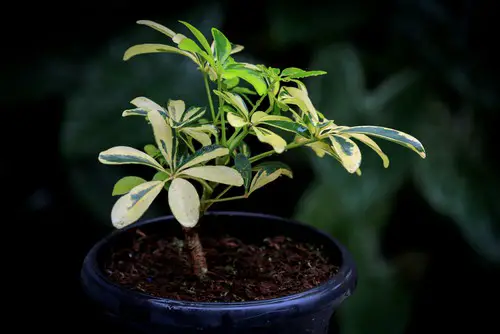Umbrella plants are popular houseplants known for their lush, green foliage and easy-to-care-for nature. However, when it comes to their root system, things can get a bit tricky. One of the most common questions asked by umbrella plant owners is whether or not these plants like to be root bound.
Understanding what it means for a plant to be root bound is crucial to answering this question. When a plant is root bound, it means that its roots have outgrown their container and have started to circle around the bottom of the pot. This can lead to a variety of issues, including stunted growth, yellowing leaves, and difficulty retaining moisture.
So, do umbrella plants like to be root bound? The answer is not a simple yes or no. While umbrella plants can tolerate being root bound to a certain extent, it is not their preferred growing condition.
In this article, we will explore the umbrella plant’s relationship with being root bound, how to identify the signs of a root-bound plant, and the steps you can take to care for your umbrella plant’s root system.
Key Takeaways on Do Umbrella Plants Thrive in Root Bound Conditions?
- Umbrella plants can tolerate being root bound to an extent, but it is not their preferred growing condition.
- Signs of a root-bound umbrella plant include protruding roots, yellowing leaves, slowed growth, curling leaves, drooping foliage, and difficulty retaining moisture.
- To care for a root-bound umbrella plant, choose a larger pot with adequate drainage holes and well-draining soil. Repot the plant whenever it shows initial signs of being root-bound.
Check out these other related posts:
- Do Monstera Plants Thrive in Root Bound Conditions?
- Do Snake Plants Need a Drainage Hole?
- Do Senetti Plants Come Back Every Year?
Understanding Root Bound
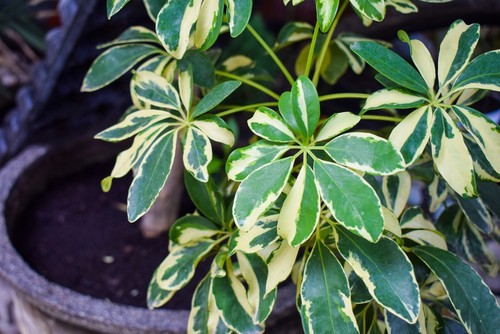
What Does Root Bound Mean
Root bound is a term used to describe a plant whose roots have outgrown its container. When a plant is root bound, its roots have grown so much that they have formed a dense mass, creating a “root ball” that takes up most of the pot.
This can result in the plant becoming pot-bound, which means that the roots are circling around the inside of the container and are unable to expand any further.
How to Identify a Root Bound Plant
It is important to know how to identify a root bound plant, as it can affect the health and growth of the plant. Signs of a root bound plant include:
- The plant outgrowing its container
- The plant needing frequent watering
- The plant becoming top-heavy and unstable
- The plant’s leaves turning yellow or brown
- The plant’s roots growing out of the drainage holes at the bottom of the pot
To check if a plant is root bound, gently remove it from its container and examine the roots. If the roots have formed a dense mass that is circling around the inside of the pot, the plant is root bound.
If a plant is root bound, it is important to repot it into a larger container with fresh soil. This will allow the roots to expand and grow, promoting healthy growth and preventing the plant from becoming pot-bound again.
Umbrella Plant and Root Bound Condition
Umbrella plants, also known as Schefflera plants, are a popular choice for indoor gardening due to their ease of care and attractive foliage. However, like all plants, they have specific needs that must be met to thrive. One of the most common concerns among gardeners is whether umbrella plants like to be root bound.
Root bound is a condition that occurs when a plant’s roots have outgrown its container, causing them to circle around the pot and become congested. This can lead to stunted growth, distress, and wilted or yellowing leaves. While some plants may prefer to be root bound to a certain extent, umbrella plants do not fall into this category.
In fact, umbrella plants can become stressed and exhibit signs of distress if left in a root-bound condition for too long. Symptoms of a root-bound umbrella plant include drooping or dropping leaves, discolored leaves, and roots turning black or brown.
To prevent this, it is recommended to repot the plant every 2-3 years or whenever roots start poking out of the drainage holes.
When repotting an umbrella plant, it is important to choose a pot that is slightly larger than the current one with adequate drainage holes. Use well-draining soil to prevent waterlogging, which can also lead to root rot. It is also helpful to prune any damaged or dead roots before repotting.
Repotting Umbrella Plant
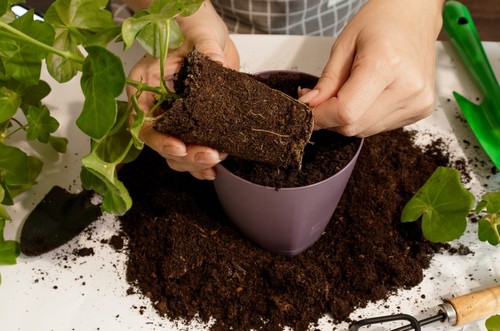
Umbrella plants prefer to be root-bound to some extent, but when the plant outgrows its pot, it is time to repot it. Repotting is the process of transplanting a plant into a larger pot.
When repotting an umbrella plant, it is important to choose a pot that is one size larger than the current pot. The new pot should have adequate drainage holes to ensure proper drainage of excess water.
The potting needs of an umbrella plant are unique, and it is important to use a potting soil mix that is well-draining and has good aeration. A soil mix comprising two parts peat moss to one part perlite and one part compost is ideal for umbrella plants.
The best time to repot an umbrella plant is in the spring when the plant is actively growing. Repotting during the growing season minimizes transplant shock, which is the stress that a plant experiences when it is moved to a new environment.
To repot an umbrella plant, gently remove the plant from its current pot and loosen the roots. Place fresh soil in the bottom of the new pot, and then place the plant in the pot. Fill the pot with fresh soil, leaving about an inch of space at the top. Water the plant thoroughly to settle the soil and eliminate air pockets.
After repotting, the umbrella plant may experience some transplant shock, but it should recover within a few weeks. It is important to avoid overwatering the plant during this time, as this can lead to root rot.
Choosing the Right Soil and Pot
When it comes to growing an umbrella plant, choosing the right soil and pot is essential for its healthy growth. The soil should be well-draining to prevent water from accumulating in the pot, which can lead to root rot.
A well-draining soil mix comprising two parts peat moss, one part perlite, and one part compost is ideal for umbrella plants. Peat moss helps retain moisture, while perlite and compost improve drainage and provide nutrients to the plant.
It is important to note that umbrella plants do not like to be overwatered, so it is crucial to choose a pot with adequate drainage holes. Without proper drainage, excess water can accumulate in the pot, leading to root rot and other fungal diseases.
When selecting a pot, it is recommended to choose one that is slightly larger than the plant’s current pot to allow for growth. However, it is important not to choose a pot that is too large, as this can lead to overwatering and root rot.
In addition to adequate drainage holes, it is also important to choose a pot made of a porous material, such as terra cotta or ceramic. These materials allow for better air circulation and help prevent water from accumulating in the pot.
Proper Care After Repotting
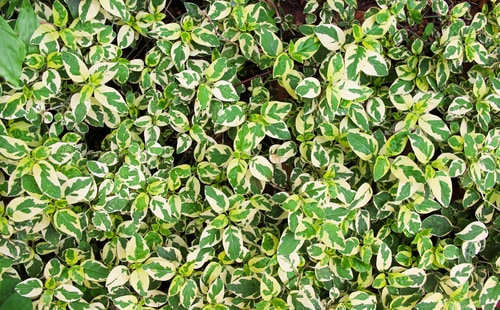
After repotting an umbrella plant, it is important to provide it with proper care to ensure its continued growth and health. Here are some tips for maintaining your umbrella plant after repotting:
1. Watering
Proper watering is crucial for the health of your umbrella plant. After repotting, it is important to water the plant thoroughly but not excessively. Overwatering can lead to root rot, which can be deadly for your plant. It is best to wait until the soil is dry to the touch before watering again.
2. Fertilizing
Fertilizing your umbrella plant can help it grow and thrive. After repotting, it is best to wait a few weeks before fertilizing to allow the plant to adjust to its new pot. When you do fertilize, use a balanced fertilizer and follow the instructions carefully. Over-fertilizing can damage your plant, so it is important to use the right amount.
3. Pruning
Pruning your umbrella plant is important for maintaining its shape and promoting healthy growth. After repotting, it is best to wait a few weeks before pruning to allow the plant to adjust to its new pot. When you do prune, use sharp, clean scissors and cut just above a leaf node. This will encourage new growth and help keep your plant looking its best.
4. Maintenance
Regular maintenance is important for the health of your umbrella plant. After repotting, check the plant regularly for signs of pests or disease. Remove any dead or yellowing leaves and keep an eye out for any other problems. It is also important to keep your plant in a location with the right amount of light and temperature.
Propagation of Umbrella Plant
Umbrella plants can be propagated easily through stem cuttings. This method is simple and effective, and it allows gardeners to create new plants from a single parent plant.
To propagate an umbrella plant, choose a healthy and mature parent plant with vigorous growth, no signs of disease or pests, and strong stems. Using pruning shears or scissors, cut a 4-6 inch section of stem from the parent plant. Make sure the cutting has at least one leaf and several nodes.
After cutting the stem, remove the leaves from the bottom half of the stem, leaving only a few leaves at the top. Dip the cut end of the stem in rooting hormone powder to encourage root growth.
Next, prepare a pot with well-draining soil. Insert the cutting into the soil, burying the bottom half of the stem. Water the soil thoroughly and place the pot in a bright, warm location.
It is important to keep the soil consistently moist but not waterlogged. After a few weeks, the cutting should begin to grow roots. Once the roots have developed, the new plant can be transplanted into a larger pot or planted directly in the ground.
It is best to propagate umbrella plants during the growing season in spring or summer when the plant is actively growing. This will give the cutting the best chance of rooting successfully.
Potential Problems and Solutions
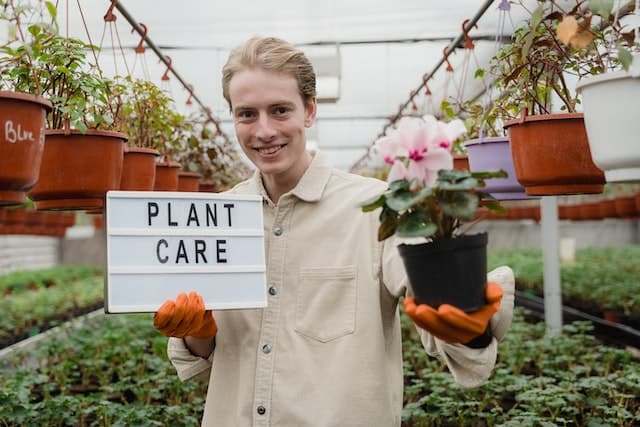
Umbrella plants are generally easy to care for, but like any plant, they can face problems. Here are some potential problems and solutions to keep your umbrella plant healthy.
1. Root Bound
Umbrella plants can become root-bound if they outgrow their pot. Signs of a root-bound plant include protruding roots, yellowing leaves, slowed growth, curling leaves, drooping foliage, and difficulty retaining moisture. If your plant is root-bound, it’s time to repot it into a larger pot with adequate drainage holes and well-draining soil.
2. Root Rot
Overwatering and poor drainage can cause root rot in umbrella plants. Signs of root rot include yellowing leaves, wilting, and a foul odor. To prevent root rot, make sure your pot has adequate drainage and don’t overwater your plant. If you suspect root rot, remove the plant from the pot, trim any affected roots, and repot it into fresh soil.
3. Pests
Umbrella plants can attract pests such as spider mites, mealybugs, and scale insects. Signs of a pest infestation include sticky leaves, brown leaves, and small bumps on the plant. To get rid of pests, wipe down the leaves with a damp cloth or use an insecticidal soap.
4. Dehydration
Umbrella plants prefer moist soil, but overwatering can lead to root rot. Underwatering can cause dehydration and lead to wilting and yellowing leaves. To prevent dehydration, water your plant when the top inch of soil is dry to the touch.
5. Lack of Nutrients
Umbrella plants require regular fertilization to thrive. Without proper nutrients, the plant may have stunted growth and yellowing leaves. Use a balanced fertilizer every two weeks during the growing season to keep your plant healthy.
Umbrella Plant in Different Environments
Umbrella plants are a popular choice for indoor plants, as they are relatively easy to care for and can thrive in a variety of environments. They are native to tropical regions such as Australia, Indonesia, and Taiwan, where they grow in humid climates and receive indirect sunlight.
When it comes to indoor environments, umbrella plants can adapt to a range of conditions. They can tolerate low light but prefer bright, indirect sunlight. In homes and offices, they can be placed near a window or in a well-lit room. However, they should be kept away from direct sunlight, as this can scorch their leaves.
In terms of temperature, umbrella plants prefer a consistent temperature between 60°F and 75°F. They can tolerate slightly cooler temperatures, but should be kept away from cold drafts. In warmer environments, they may benefit from occasional misting to increase humidity.
Umbrella plants can also live outdoors in certain environments. They are considered tropical plants and thrive in warm, humid climates. If you live in a region with a similar climate, you may be able to grow umbrella plants outdoors. However, they should be protected from direct sunlight and cold temperatures.
Additional Information on Umbrella Plants
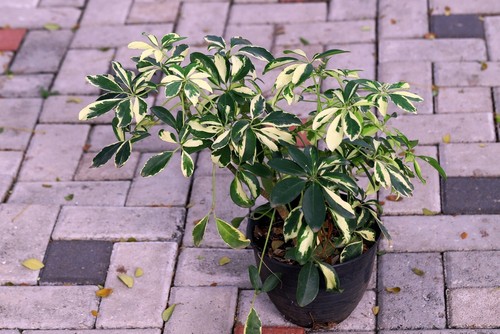
Umbrella plants, also known as Schefflera plants, are a popular choice for indoor greenery due to their beautiful foliage and easy care. These evergreen shrubs are native to Taiwan and can grow up to 10 feet tall in their natural habitat. However, when grown as a potted specimen, they usually reach a maximum height of 6 feet.
One of the most striking features of umbrella plants is their leaves. They are typically large, glossy, and oval-shaped with a pointed tip. The leaves grow in clusters of 7-9 leaflets that radiate outwards from a central point, resembling an umbrella. The leaves can be green, variegated, or even tinged with bronze.
In addition to their attractive leaves, umbrella plants can also produce flowers. However, it is rare for indoor plants to bloom. When they do, the flowers are small and inconspicuous, and they usually appear in clusters on long stalks.
Schefflera plants are also known for their air-purifying benefits. They can remove harmful toxins from the air, making them an ideal choice for homes and offices. Additionally, they are easy to care for and can tolerate a range of light conditions, from bright, indirect light to low light.
While umbrella plants are not cacti or succulents, they do have some similarities in terms of their care requirements. They prefer well-draining soil and can be sensitive to overwatering. It’s important to allow the soil to dry out slightly between waterings to prevent root rot.
Frequently Asked Questions
How often should I repot my umbrella plant?
Umbrella plants prefer to be slightly root-bound, but if the roots start to protrude from the drainage holes or the plant becomes too top-heavy, it’s time to repot. It’s recommended to repot every 2-3 years.
What type of soil is best for umbrella plants?
Umbrella plants prefer well-draining soil that is rich in organic matter. A good soil mix is two parts peat moss to one part perlite and one part compost.
What are some common problems with umbrella trees?
Some common problems with umbrella trees include overwatering, underwatering, pests, and diseases. Overwatering can cause root rot, while underwatering can cause the leaves to wilt and drop. Pests such as spider mites and mealybugs can also infest umbrella plants, while diseases such as leaf spot and powdery mildew can cause damage.
How can I make my umbrella plant grow bushier?
To make your umbrella plant grow bushier, you can prune it back by cutting off the top of the stem. This will encourage new growth and help the plant to become more compact. You can also pinch back the tips of the stems to promote branching.
When should I prune my umbrella plant?
You can prune your umbrella plant at any time of the year, but it’s best to do so in the spring or summer when the plant is actively growing. Pruning in the fall or winter can slow down growth.
Why are the leaves on my umbrella tree turning yellow and falling off?
Yellowing and falling leaves can be a sign of overwatering, underwatering, or pests. Check the soil moisture level and adjust watering accordingly. Inspect the plant for signs of pests such as spider mites or mealybugs and treat as necessary.

Hey, I’m Lisa and I’ve been an avid gardener for over 30 years. I love writing, talking and living in the garden! Feel free to connect with me on my socials below

